Login to access subscriber-only resources.
Archives
-

Vol. 9 No. 1 (2025)
Table of Contents
Reassessment of Northern Kuwait Bay’s Dry-Stone Tombs: Insights into Architecture, Burial Practices, and Socio-Economic Dynamics - Tara Steimer-Herbet, Tobias Hofstetter, Imane Achouche, Łukasz Rutkowski, Alessandra Varalli, Claudine Abegg, Sultan al-Duweish and Marie Besse
New Light on and Scientific Analysis of a Late Neo-Elamite Copper Alloy Fitting Reportedly from Tang-i Sarvak in the Bakhtiyari Highlands of Southwest Iran - St J. Simpson and A.R. Mongiatti
The Ottoman Period in Damascus (18th Century). The al-Sibāʻī Mansion:
Surviving Evidence of a House with Three Courtyards - Imane Fayyad
Byzantine and Post-Byzantine Religious Objects from Cilicia (Southern Turkey) - Ergün Laflı, Maurizio Buora and Alev Çetingöz
Ishtar, her ‘strength’ and her iconographic proposal - Valeria degli Abbati
Babylon in comics - Laura Battini -

Vol. 8 No. 2 (2024)
The five articles that make up the second issue 2024 of Ash Sharq, are reworked versions of some of the lectures held at ASOR in the session 'Thinking, speaking and representing animals in the Ancient Near East', organised by Laura Battini between 2018 and 2021. They form a coherent whole, all dealing with the symbolic aspects of animals.
-

Vol. 8 No. 1 (2024)
Sutton Hoo, St. Sergius and the Sasanians: Anglo-Saxon finds re-interpreted from an eastern perspective – St John Simpson
Têtes coupées : une primauté éblaïte ? Considérations et autres remarques sur la frise à incrustations d’Ebla – Rita Dolce
Quelques notes sur l’architecture mésopotamienne des IIe et Ier millénaires av. J.-C. : l’ensemble de réception des palais – Laura Battini
Unpublished examples of lead miniature vessels from Turkey – Ergün Laflı and Maurizio Buora
-

Vol. 7 No. 2 (2023)
Table of Contents
Pierre Villard - Jack M. Sasson, Chapel Hill, NC.
‘Transitional Cases’, Allonymy, and the Use of Aramaic in the Early Neo-Assyrian Provincial Administration:The Example of Ilu-bāni/-ibni of Sūḫu - Alexander Johannes Edmonds
Divine Battles in the Akkadian Period - Laura Battini
Work Hard, Play Hard: Gameboards and Merchants’ Way of Life in Middle Bronze Age Anatolia - Nancy Highcock and Yağmur Heffron
Updating the Presence of Beveled Rim Bowls in Northern Central Zagros. Some Preliminary Data from Tepe Qaleh Naneh (Kurdistan) - Ali Binandeh and Silvana Di Paolo
Qalat-e- Shah: a Median or Islamic Watch Tower in Northwestern Iran? - Ali Binandeh, Mohammad Hossein Rezaei and Obeidollah Sorkhabi
-
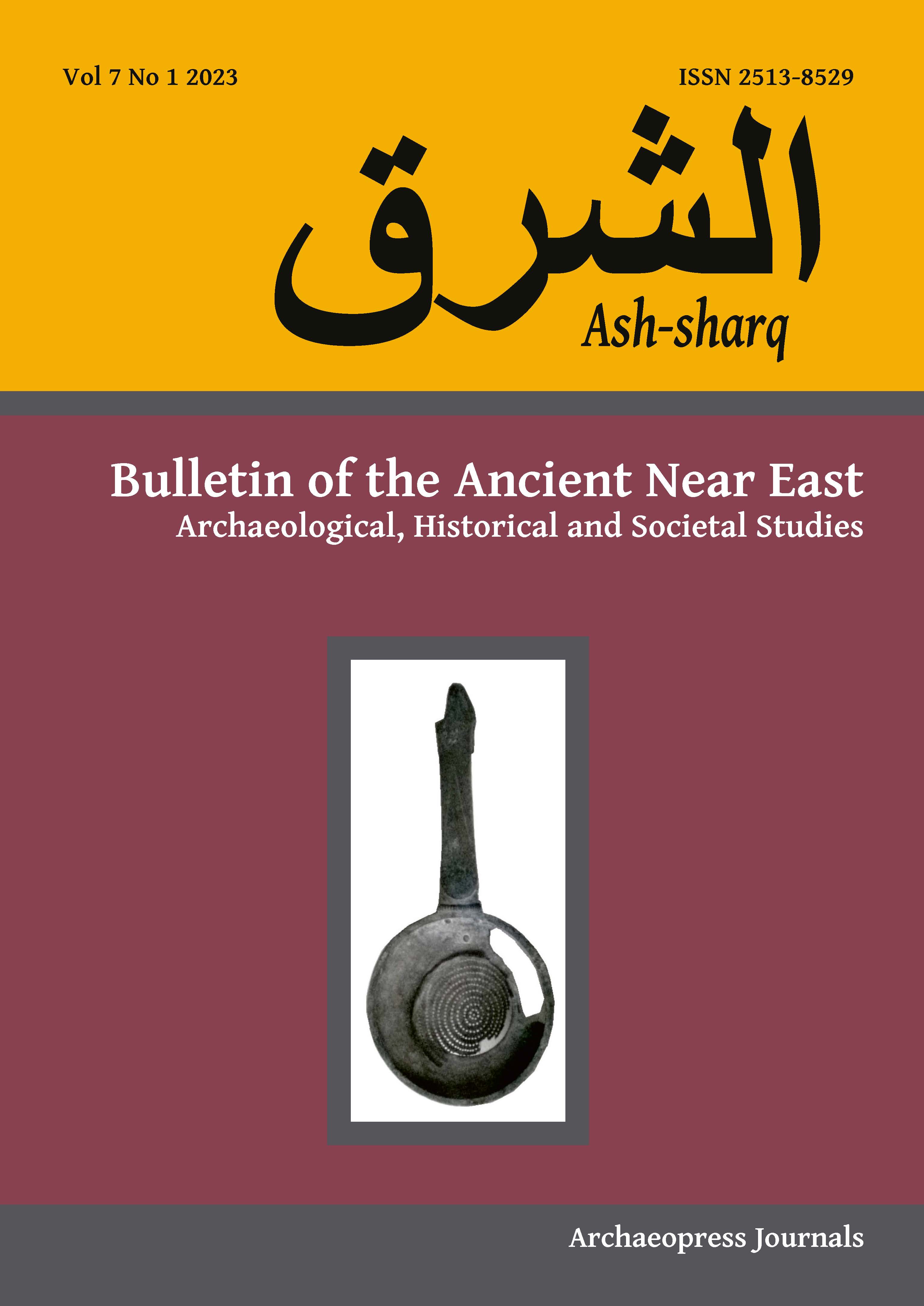
Vol. 7 No. 1 (2023)
Table of Contents
Hommage to Pierre Villard
The use of early photography for archaeological research: The 1929-1931 expedition to Meskeneh/Balis (Syria) in the photograph collection of the Biblioteca Berenson in Florence – Stefano Anastasio
The place of deportation of the Babylonian divine statues – Pierre Villard
Taharqa, not Ushanahuru: Reconsidering the identity of the African individual on the victory stele of Esarhaddon – Mattias Karlsson
A selection of metalwork from classical antiquity and the Middle Ages from Cilicia in southern Turkey – Ergün Laflı and Alev Çetingöz
Down-the-line from the Persian Gulf to the Armenian Highlands: Archaeomalacology as a tool for the recognition of long-distance connections during the Middle Bronze Age – Andrea Cesaretti, Maria Flavia Gravina and Roberto Dan
From Jemdet Nasr origins to an early Muslim town in the wetlands: second preliminary report on excavations at Kobeba (Dhi Qar governorate), southern Iraq – St John Simpson
-
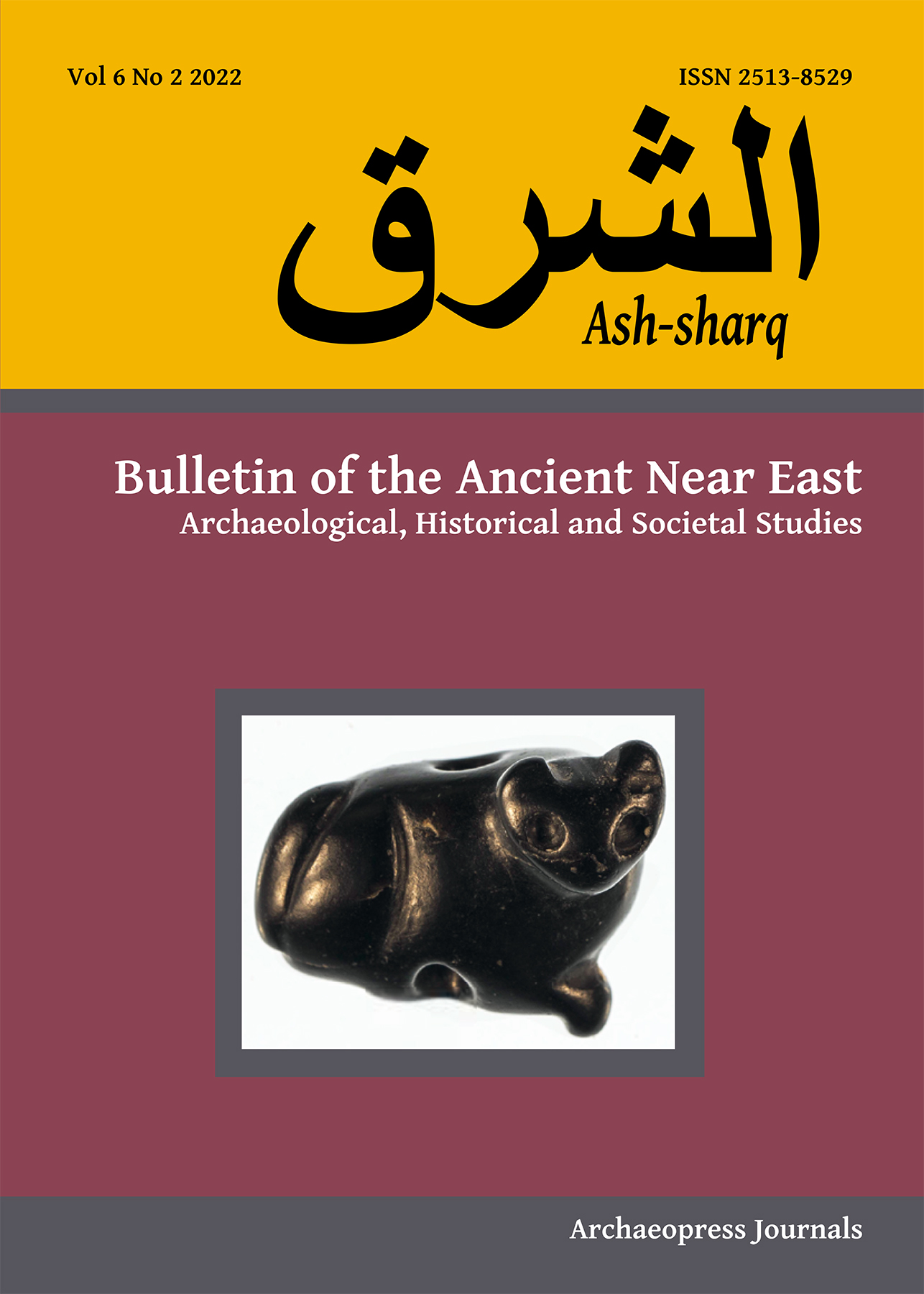
Vol. 6 No. 2 (2022)
Table of Contents
Degrees of jurisdiction and the notion of appeal in the Neo-Assyrian period – Pierre Villard
Some inlays, a stone mace and an engraved plaque – Barbara Couturaud
Architectural and decorative remains from the 16th and 17th centuries – Imane Fayyad
A 3D model recovers its current location – Laura Battini
-
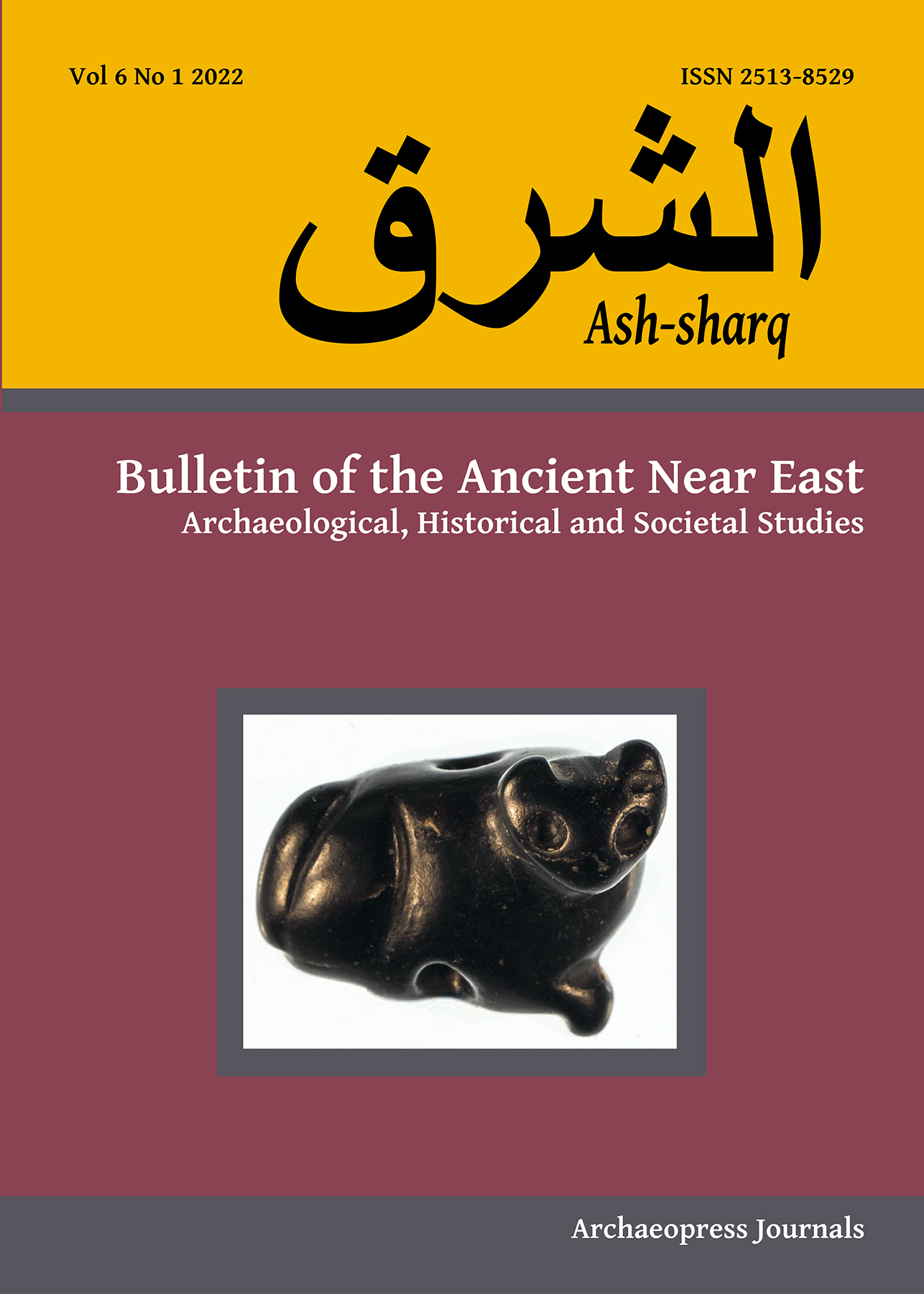
Vol. 6 No. 1 (2022)
Table of Contents
Obituary: Agnès Spycket (1921-2022) – Nicole Chevalier
Tulul Kobeba: First results of survey and excavation at a looted early medieval ‘marsh Arab’ township in Dhi-Qar province, southern Iraq – St John Simpson
NBC 3171: A recarved Old Babylonian/ Kassite seal – Agnete W. Lassen and Enrique Jiménez
Some remarks on the beheading iconography from the lands between the Taurus and Greater Caucasus – Roberto Dan and Andrea Cesaretti
The cat, a hidden pet in Mesopotamia? Tablet 45 of Šumma alu and a method to identify this feline – Laura Battini
-

Vol. 5 No. 2 (2021)
Table of Contents
The Assyrian Stylized Tree: A Date Palm Plantation and Aššurnaṣirpal II’s Stemma – Norma Franklin
Mechanical Examination of Swords in the Eastern Mediterranean from the Late Bronze Age to the Early Iron Age – K. Kopanias, E. Vemou and K. Sidiropoulou
The first Bronze Age bull-headed lyre from south-east Arabia? Tantalising shell inlays from the third millennium BC (Umm an-Nar) site of al-Tikha, Sultanate of Oman – St J. Simpson
Appositive Semantic Classification in Sumerian Cuneiform and the Implementation of iClassifier – Gebhard J. Selz
-

Vol. 5 No. 1 (2021)
Ash-sharq is a journal devoted to short articles on the archaeology, history and society of the Ancient Near East. It is published twice a year. The principal language of the publication is English; there will be some provision for papers in the languages currently spoken in the Middle East (Arabic, Hebrew, Kurde, Persian, Turkish), accompanied by an English abstract of 500 words.
-

Vol. 4 (2020)
Ash-sharq is a journal devoted to short articles on the archaeology, history and society of the Ancient Near East. It is published twice a year. The principal language of the publication is English; there will be some provision for papers in the languages currently spoken in the Middle East (Arabic, Hebrew, Kurde, Persian, Turkish), accompanied by an English abstract of 500 words.
-
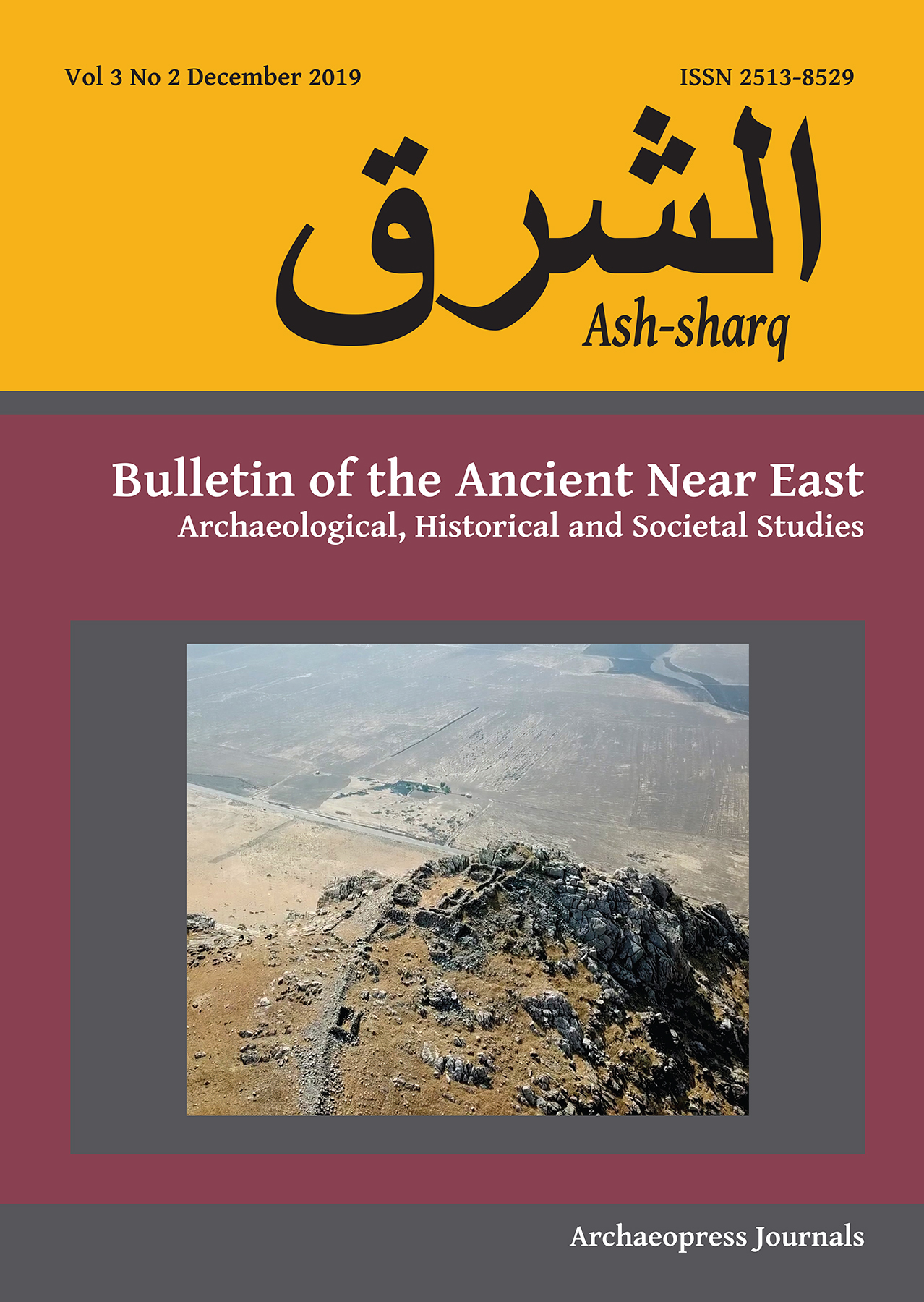
Vol. 3 No. 2 (2019)
Ash-sharq is a journal devoted to short articles on the archaeology, history and society of the Ancient Near East. It is published twice a year. The principal language of the publication is English; there will be some provision for papers in the languages currently spoken in the Middle East (Arabic, Hebrew, Kurde, Persian, Turkish), accompanied by an English abstract of 500 words.
-
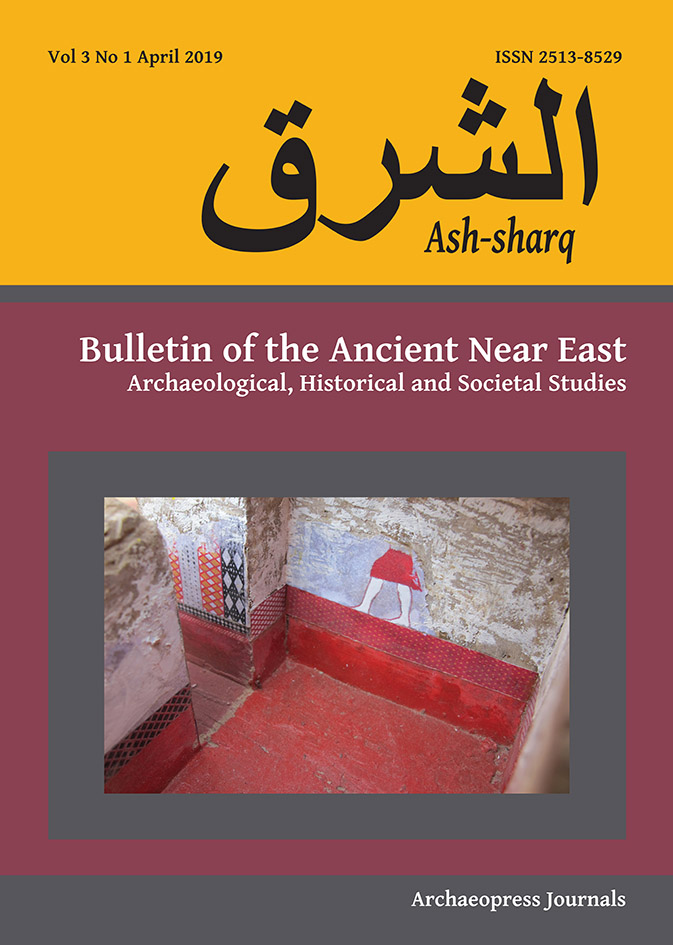
Vol. 3 No. 1 (2019)
Ash-sharq is a journal devoted to short articles on the archaeology, history and society of the Ancient Near East. It is published twice a year. The principal language of the publication is English; there will be some provision for papers in the languages currently spoken in the Middle East (Arabic, Hebrew, Kurde, Persian, Turkish), accompanied by an English abstract of 500 words.
-
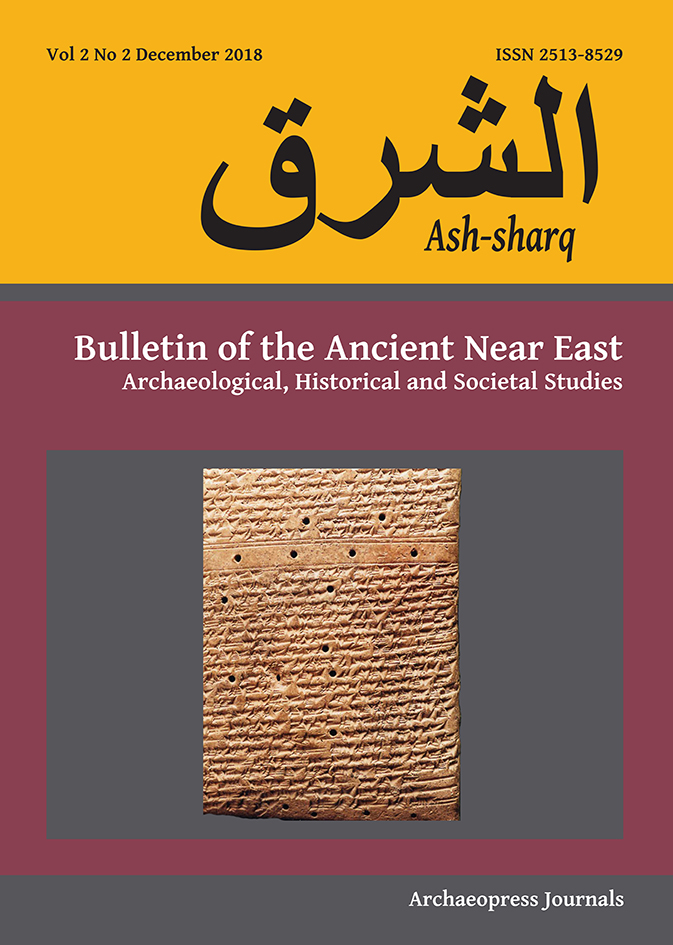
Vol. 2 No. 2 (2018)
Ash-sharq is a journal devoted to short articles on the archaeology, history and society of the Ancient Near East. It is published twice a year. The principal language of the publication is English; there will be some provision for papers in the languages currently spoken in the Middle East (Arabic, Hebrew, Kurde, Persian, Turkish), accompanied by an English abstract of 500 words.
-

Vol. 2 No. 1 (2018)
Ash-sharq is a journal devoted to short articles on the archaeology, history and society of the Ancient Near East. It is published twice a year. The principal language of the publication is English; there will be some provision for papers in the languages currently spoken in the Middle East (Arabic, Hebrew, Kurde, Persian, Turkish), accompanied by an English abstract of 500 words.
-

Vol. 1 No. 2 (2017)
Ash-sharq is a journal devoted to short articles on the archaeology, history and society of the Ancient Near East. It is published twice a year. The principal language of the publication is English; there will be some provision for papers in the languages currently spoken in the Middle East (Arabic, Hebrew, Kurde, Persian, Turkish), accompanied by an English abstract of 500 words.
-
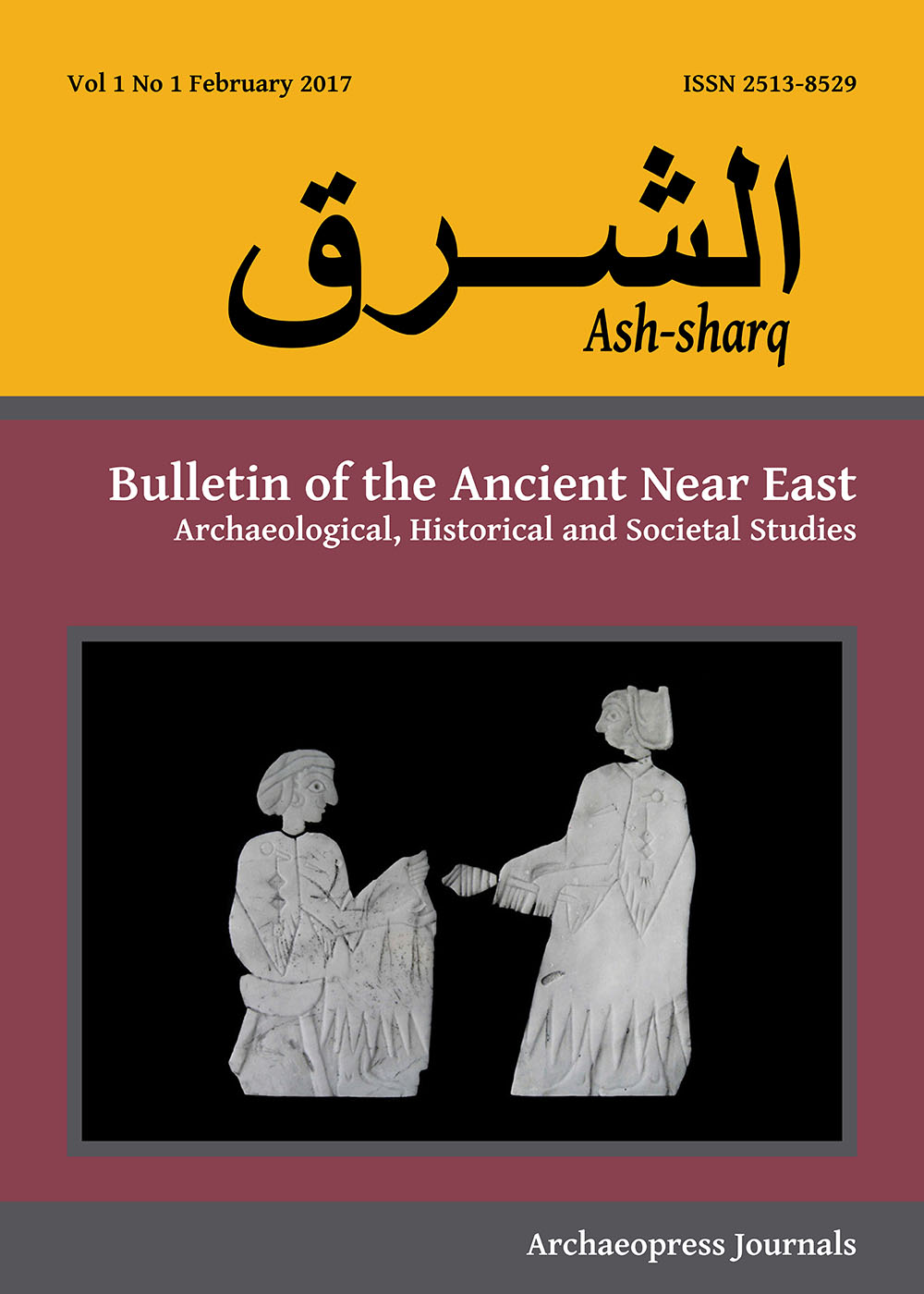
Vol. 1 No. 1 (2017)
Ash-sharq is a journal devoted to short articles on the archaeology, history and society of the Ancient Near East. It is published twice a year. The principal language of the publication is English; there will be some provision for papers in the languages currently spoken in the Middle East (Arabic, Hebrew, Kurde, Persian, Turkish), accompanied by an English abstract of 500 words.

